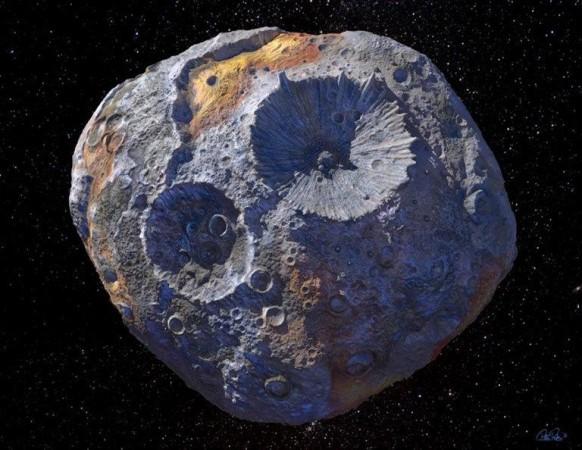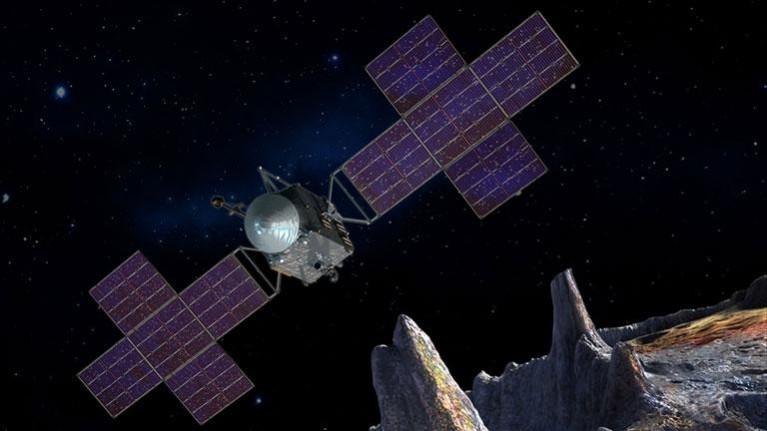While there is much to learn about Earth, mankind has always looked skywards with wonder. From the very first Moon mission to landing exploratory vehicles on Mars, humanity's fascination with the 'final frontier' only grows. Space is not only home to planets but also several objects that warrant study. One such body is the asteroid known as '16 Psyche', or simply as 'Psyche'.
It has received widespread attention in recent times due to the beyond the astronomical value of $10,000 quadrillion on account of its composition. So what is Psyche? And why is it special? Let us take a look.
A 'Potato' In Space

The celestial body was identified by Annibale de Gasparis, an Italian astronomer, on 17 March 1852. He named it after the Greek goddess of soul, Psyche. It orbits around the sun in the asteroid belt, a region between Jupiter and Mars that contains over a million such rocky bodies. Their diameters range from as small as 10 meters to nearly 100 kilometers.
As far as size goes, Psyche is no thumbling. It has a diameter of around 226 kilometers, or about one-sixteenth the diameter of our Moon. The prefix '16' refers to its place in the order of 'minor planets' discovered. Psyche floats at a distance of 179 to 370 million kilometers from Earth. With approximate dimensions of 279 kilometers by 232 kilometers, by 189 kilometers, it is shaped like a potato.
Abundance of Riches
So what makes this massive rock significant? Its composition, of course. Psyche is the largest know M-type asteroid (i.e) asteroids whose constitution is only partially known, where some are composed of nickel and iron, either in their pure forms or combined with small quantities of stone. However, unlike other asteroids in the category that are either icy or rocky, scientists posit that it is entirely metallic, largely composed of iron and nickel like Earth's core.

Most importantly, it has been suggested that several rare metals—which are considered precious on Earth—may also be present along with the two predominant metals. These include cobalt, gold, iridium, platinum, and rhenium. However, only one question that makes a difference to most of mankind—How much is it worth? An unfathomable $10,000 quadrillion or above! Or in other words, several times the total global economy.
Another important hypothesis based on Psyche's composition is that the asteroid may actually be the exposed core of a very early planet (protoplanet). The planet's out crusty layer may have been stripped away as a result of massive collisions billions of years ago. After studying the object and its visible, infrared, and ultraviolet wavelength, astronomers have arrived at the consensus that its surface is indeed metal-rich.
Exploring An Asteroid Like No Other
The sheer estimated value of Psyche has led to wonderment and the hope that the asteroid could be mined for its riches someday. However, it would not be a wise idea according to economic experts. If the metals from the heavenly body, particularly gold, were brought back to Earth, their abundance would cause the commodity price and market to come down crashing and make the global economy collapse like a pack of cards.

Nevertheless, mining the asteroid is still a far-fetched idea and is a long way away. But that does not mean Psyche will not be explored. The 'Psyche Mission' is set to take off in 2022. It is led by Arizona State University and the mission will be managed by NASA's Jet Propulsion Laboratory (JPL). Equipped with advanced instruments such as gamma-ray and neutron Spectrometer, multispectral imager, and magnetometer, among others, the spacecraft will orbit the asteroid for 21 months.
Psyche will be mapped and studied in detail. Some important questions such as whether it is the core of a planet will also be explored. After its planned launch in 2022, the mission is expected to reach the asteroid in 2026-2027.
Dr. Lindy Elkins-Tanton, leader of the 'Psyche Mission', said in a podcast recently, "Well, our number one science objective is to figure out whether or not Psyche is a core. Is it part of that metal middle of a planetesimal? But here's my secret favorite thing. My secret favorite thing is that all our ideas about Psyche are wrong. And when we get there, we're going to discover a kind of material and a kind of body that we had not anticipated. And it'll teach us something entirely new about how planets are formed. That's my secret wish."












!['Had denied Housefull franchise as they wanted me to wear a bikini': Tia Bajpai on turning down bold scripts [Exclusive]](https://data1.ibtimes.co.in/en/full/806605/had-denied-housefull-franchise-they-wanted-me-wear-bikini-tia-bajpai-turning-down-bold.png?w=220&h=138)
![Nayanthara and Dhanush ignore each other as they attend wedding amid feud over Nayanthara's Netflix documentary row [Watch]](https://data1.ibtimes.co.in/en/full/806599/nayanthara-dhanush-ignore-each-other-they-attend-wedding-amid-feud-over-nayantharas-netflix.jpg?w=220&h=138)



